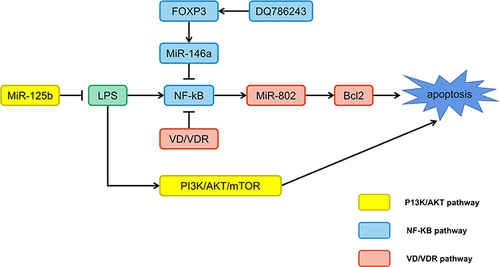Figures & data
Figure 1 Biogenesis of microRNA. (A) MiRNA is transcribed by RNA polymerase (Pol) II or III into primary (pri)‐miRNA, which is then (B) processed by Drosha into precursor (pre)‐miRNA. (C) The pre‐miRNA is transported from the nucleus into the cytoplasm by exportin 5, where it is then (D) processed by Dicer into a miRNA duplex. (E) The unwinding of the duplex results in the degradation of the passenger strand, and the (F) incorporation of the mature strand into RNA‐induced silencing complex (RISC). The RISC then suppresses the gene expression of a target messenger RNA (mRNA) by either (G) mRNA degradation or (H) translational repression, resulting in the regulation of the cellular function. (I) Furthermore, miRNAs can also be packaged into exosomes, which are then (J) compartmentalized into a multivesicular body (MVB). (K) The MVB fuses with the plasma membrane, resulting in the transfer of miRNA‐containing exosomes to recipient cells and mediating intercellular gene regulation.

Table 1 MiRNAs are Involved in Regulating Oral Lichen Planus

